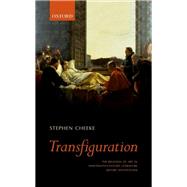Transfiguration The Religion of Art in Nineteenth-Century Literature (Before Aestheticism)
, by Cheeke, Stephen- ISBN: 9780198757207 | 0198757204
- Cover: Hardcover
- Copyright: 11/17/2016
Transfiguration explores the work of John Ruskin, Robert Browning, Dante Gabriel Rossetti, and Walter Pater, treating in particular the ways in which they engaged with the Christian content of their subject, and, in Pater's case, how the art of Christianity was contrasted with classical sculpture. Stephen Cheeke examines two related phenomena: idolatry (a false substitution, a sexual betrayal), and the poetics of transfiguration (to elevate or glorify subject matter not thought of as conventionally poetic, to praise). Central to the book is the question of the "translation" of religion into art and aesthetics, a process which supposedly undergirds the advent of the museum age and makes possible the idea of a 'religion of art' as a phenomenon of late century Aestheticism. Such a phenomenon is prepared for, however, through the engagement with Christian painting and classical sculpture in the work of these four writers. All four thought carefully about the ways in which a particular mimetic impulse of 'making-live' in artworks could be connected to religious experience. This meant exploring the nature of the link between seeing and believing--visualising in order to conceive, to verify, but also in the sense of being acted upon by the visible. All four wrote about the great power of artworks to transfigure the objects of their attention. In each case, there emerges the possibility of a secret sexual knowledge hiding within, or lying on the other side of the sensuous knowledge of aesthesis. All four wondered whether this was inherently hostile to Christianity, or whether it may, finally, be an accommodation within it.







